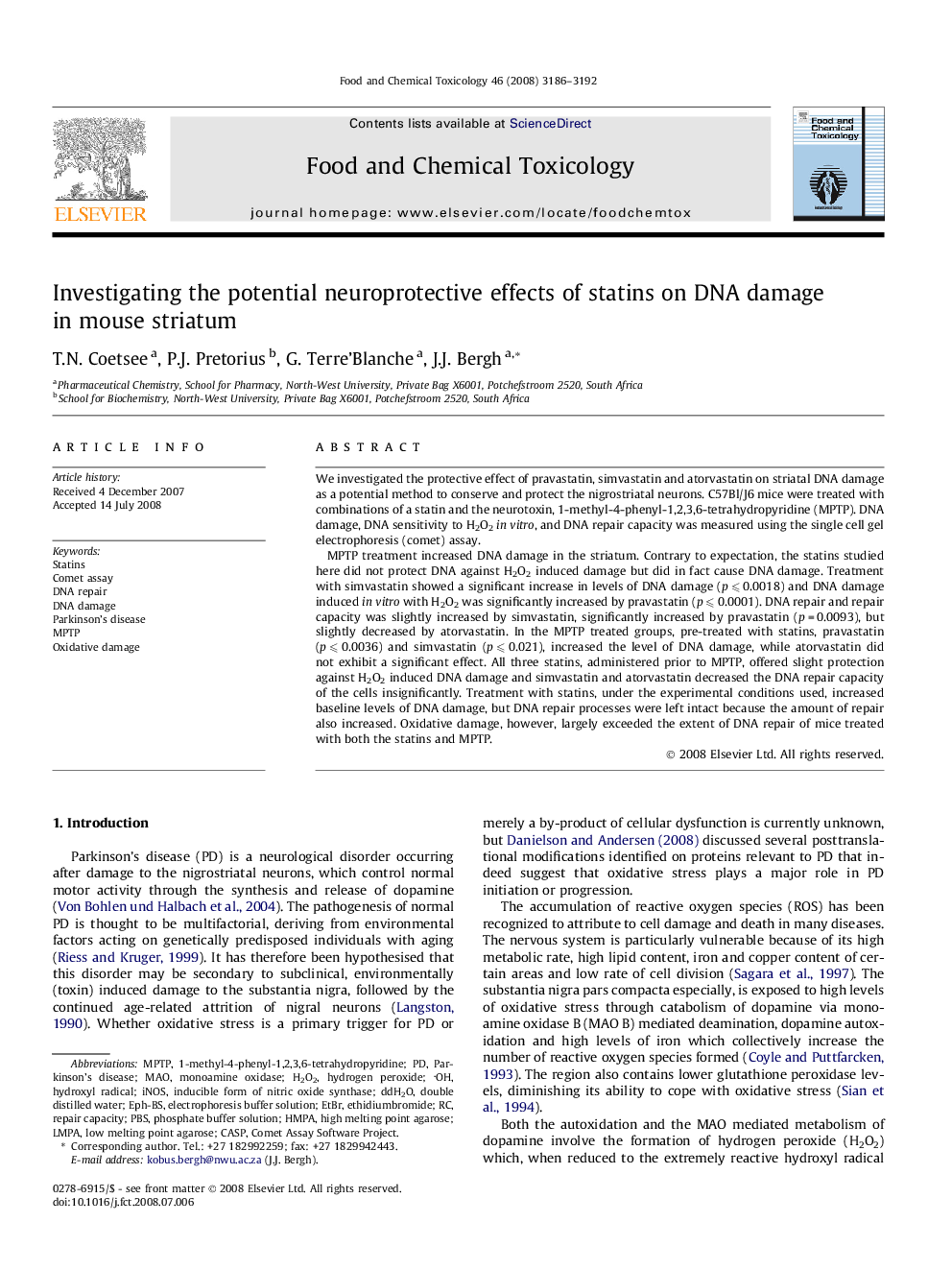| Article ID | Journal | Published Year | Pages | File Type |
|---|---|---|---|---|
| 2586921 | Food and Chemical Toxicology | 2008 | 7 Pages |
We investigated the protective effect of pravastatin, simvastatin and atorvastatin on striatal DNA damage as a potential method to conserve and protect the nigrostriatal neurons. C57Bl/J6 mice were treated with combinations of a statin and the neurotoxin, 1-methyl-4-phenyl-1,2,3,6-tetrahydropyridine (MPTP). DNA damage, DNA sensitivity to H2O2in vitro, and DNA repair capacity was measured using the single cell gel electrophoresis (comet) assay.MPTP treatment increased DNA damage in the striatum. Contrary to expectation, the statins studied here did not protect DNA against H2O2 induced damage but did in fact cause DNA damage. Treatment with simvastatin showed a significant increase in levels of DNA damage (p ⩽ 0.0018) and DNA damage induced in vitro with H2O2 was significantly increased by pravastatin (p ⩽ 0.0001). DNA repair and repair capacity was slightly increased by simvastatin, significantly increased by pravastatin (p = 0.0093), but slightly decreased by atorvastatin. In the MPTP treated groups, pre-treated with statins, pravastatin (p ⩽ 0.0036) and simvastatin (p ⩽ 0.021), increased the level of DNA damage, while atorvastatin did not exhibit a significant effect. All three statins, administered prior to MPTP, offered slight protection against H2O2 induced DNA damage and simvastatin and atorvastatin decreased the DNA repair capacity of the cells insignificantly. Treatment with statins, under the experimental conditions used, increased baseline levels of DNA damage, but DNA repair processes were left intact because the amount of repair also increased. Oxidative damage, however, largely exceeded the extent of DNA repair of mice treated with both the statins and MPTP.
